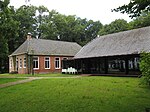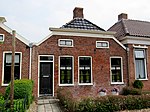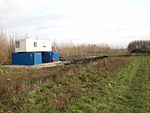Bellingwolde

Bellingwolde (Dutch pronunciation: [ˌbɛlɪŋˈʋɔldə]; Gronings: Bennewolle) is a village with a population of 2,655 people in the municipality Westerwolde in the Netherlands. It is situated in the southeast of the region Oldambt, in the north of the region Westerwolde, and in the east of the province Groningen, at the border with Germany. The settlement dates back to the 11th century. It flooded multiple times until the 16th century. In the 18th and 19th century agriculture prospered and large farmhouses were built. It was a separate municipality until it merged with Wedde into Bellingwedde in 1968. Bellingwolde has a state protected village area with several monumental farmhouses. Other attractions are the Magnus Church, the Law House, Veldkamp's Mill, and Museum de Oude Wolden. There are four primary schools and a secondary school in the village.
Excerpt from the Wikipedia article Bellingwolde (License: CC BY-SA 3.0, Authors, Images).Bellingwolde
Hoofdweg, Westerwolde
Geographical coordinates (GPS) Address Nearby Places Show on map
Geographical coordinates (GPS)
| Latitude | Longitude |
|---|---|
| N 53.116666666667 ° | E 7.1652777777778 ° |
Address
Hoofdweg 199
9695 AG Westerwolde
Groningen, Netherlands
Open on Google Maps











